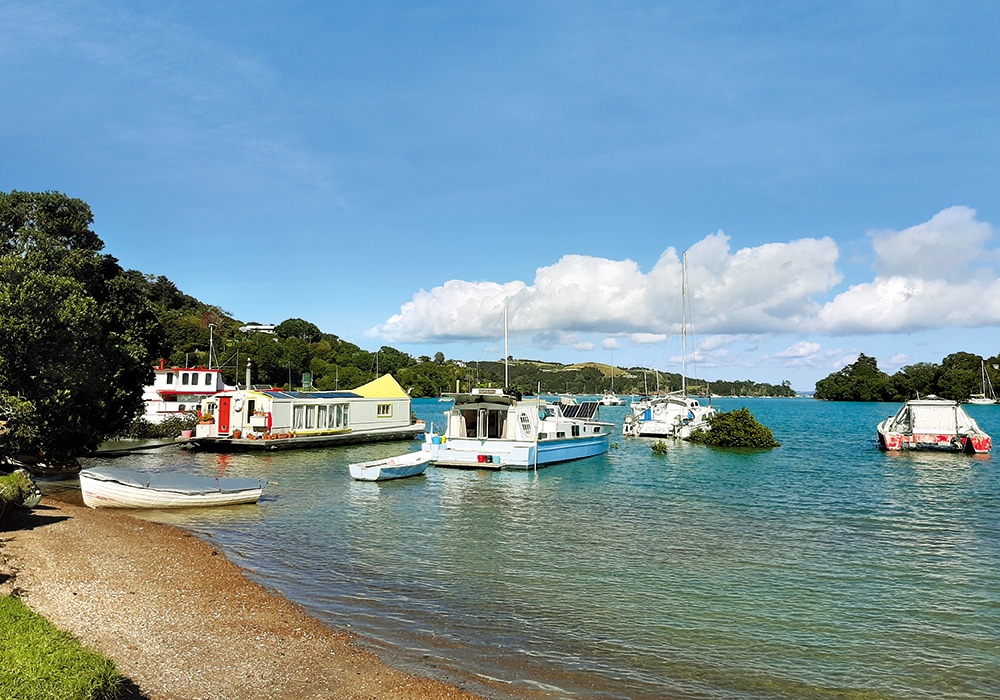
Explore Waiheke’s Beaches, Vineyards and More
- My Latest article published in Motorhomes Caravans & Destinations Magazine
- JULY 27, 2021
Waiheke Island is famous for its beaches and vineyards, but Heather Whelan discovers there are plenty of other attractions too.
Vines and wines
Of course, you can’t visit Waiheke without visiting a vineyard or two. There are more than 20 wineries, so visitors have lots of choice. Most offer tastings and food, and all are in beautiful surroundings. On a recent trip we visited a few old favourites, and tried some that were new to us. Casita Miro at Onetangi has award-winning dining and Gaudi-inspired mosaics. It’s popular, but when it’s fully booked you can sit under olive trees with a platter. Obsidian Wines are just a short walk away, through the vines.
It’s a bit of a trek out to Man O’ War Vineyard, at the far eastern end of the island, but it’s New Zealand’s only beachfront wine-tasting experience. We visited after a trip to Stony Batter, and sat in the afternoon sun with a glass of wine as the waves lapped on the beach.
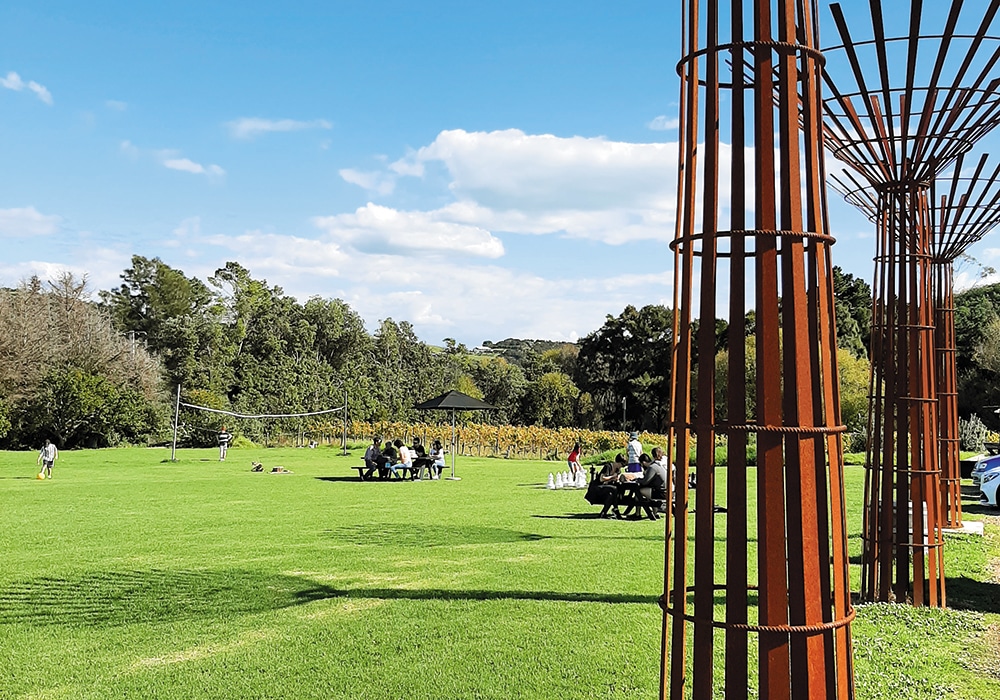
Over a few days we visited the four vineyards clustered along Onetangi Road: Tantalus, Stonyridge, Te Motu and Wild on Waiheke. Stonyridge has been voted one of the top 10 wineries in the world – with its mellow brick and ivy-covered walls you could be in France. Next door at Te Motu we enjoyed wine-tasting and lunch in a shady courtyard, while another time we checked out the Tantalus craft brewery.

Fun and games
For something different, don’t miss Wild on Waiheke. Not only can you relax with wine and great food, you can try your hand at a few games and activities. There’s giant chess, petanque and Connect Four, but we were more adventurous and tried the laser clay bird shooting and archery. (Warning – laser guns are heavy to hold for the half-hour session.) The archery was a lot of fun, even though Malcolm managed to miss the target and skewer a vine.
Knowing we’d be spending time on Waiheke’s beaches, we packed our croquet set and had a go at Onetangi Bay. This was easier than you’d think, given the whole course was a sand trap.
Other adventures you can have on Waiheke include a zipline, Segway tours, electric bikes, mountain biking and horse treks. On the water you can go windsurfing and paddle boarding, as well as kayaking, sailing, diving and snorkelling.
Walk Waiheke
Waiheke boasts 100km of walking trails that circumnavigate the island. The network is called Te Ara Hura, and there are maps of the various sections: Headlands, Beaches ‘n’ Baches, Forest Heart and The Far End.
We love walks along beaches or with ocean views, so we headed to the well-known sandy beaches at Oneroa, Onetangi and Palm Beach. Then we discovered tiny Hekerua Bay and walked along the cliffs to Sandy Bay. We can also recommend the walk from Blackpool, along The Esplanade to Huruhi Bay, and the longer loop walk from Matiatia Bay via Cable Bay. And it’s worth stopping at Ostend’s causeway to admire the cluster of houseboats and interesting yachts moored there. Look out for the yellow submarine bobbing in the bay.
There are seven significant wetland areas on Waiheke. The community volunteers with the Love our Wetlands project are restoring and replanting these ecosystems. We wandered around Rangihoua Wetlands after visiting the museum. It’s a one-hour loop, taking in a Te Arawa waka landing site, and is a contrast to the wide ocean views on other parts of the island.
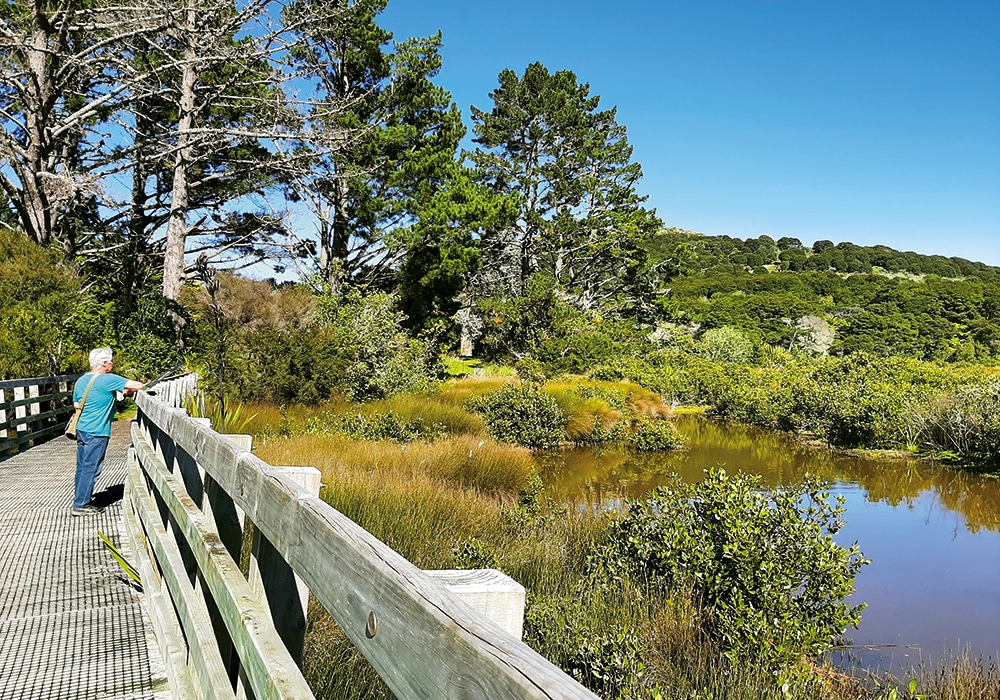
Island history
Waiheke was known originally as Te Motu Arai Roa – the long sheltering island. The name Waiheke first appeared on a European map of 1821. More than 500 years after the first Polynesian people arrived on the island, Europeans began to make their homes there. Early in the 20th century the villages at the western end
of Waiheke were subdivided, electricity coming in 1953.
There’s plenty of information about this Māori and European history at the Museum of Waiheke and Historic Village, just across the road from the vineyards on Onetangi Road. The museum, housed in a reconstructed woolshed, is a treasure trove of artefacts, ranging from a very old Hei Tiki found at Whakanewha/Rocky Bay to a player piano brought by European settlers.
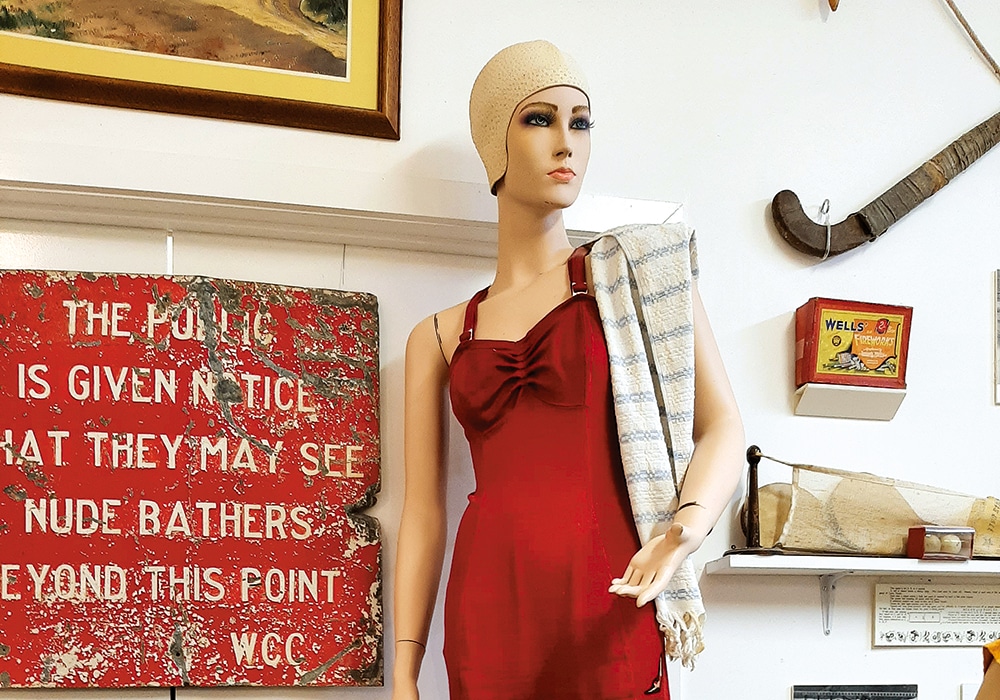
We spent a while browsing displays that reflected island life through the years, before exploring the Historic Village. Here we found three cottages that showed household life in the early 1900s – only one had electricity. There was also a police cell and a long drop toilet (not in use).
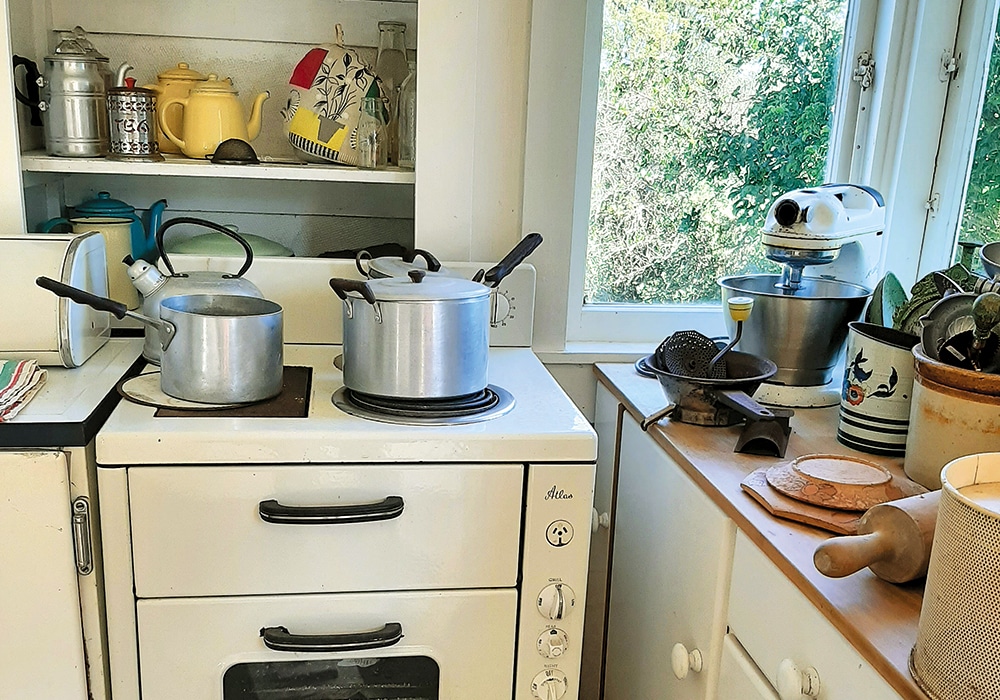
Stony Batter
It’s a 25-minute drive from Onetangi to Stony Batter Historic Reserve, along a mostly unsealed, narrow road. This eastern end of the island is very different from the rest of Waiheke, with the 4500-acre Man O’ War Station, an area of vineyards, livestock paddocks and regenerating bush.
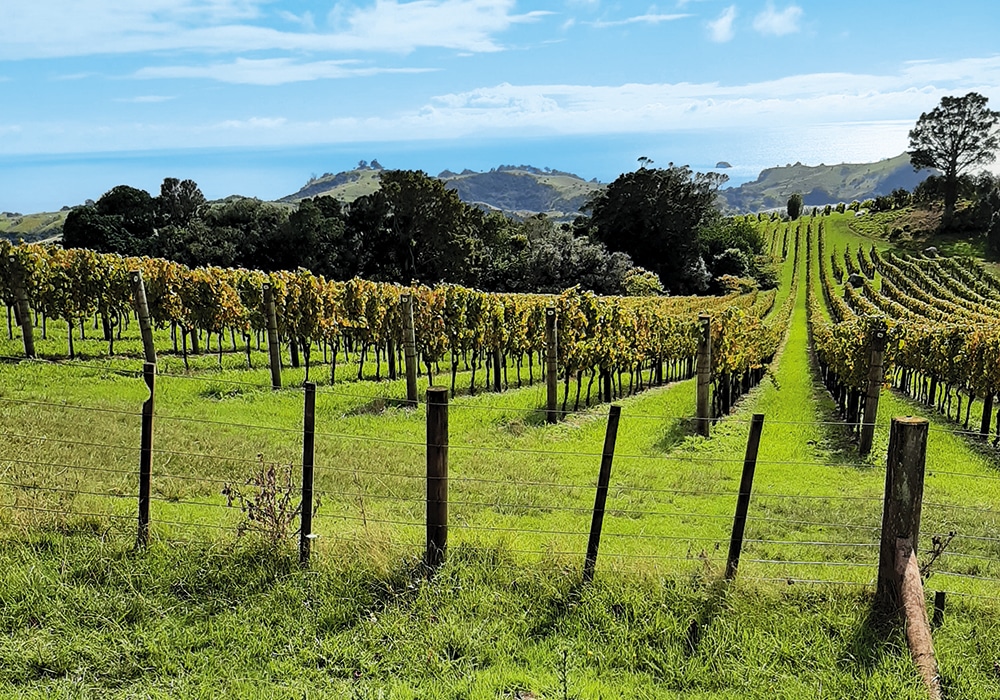
Fort Stony Batter was built in secrecy during World War II as part of a series of gun emplacements protecting Auckland. Its labyrinthine tunnels were decommissioned after the war and were left for adventurous locals to explore. After being closed for six years, the tunnels were opened in December 2020 by local archaeologist Tim Moon. Tim and his team have fitted out the tunnels with safety features, such as handrails, lighting and additional exits.
We took the one-hour tour. After we purchased tickets from Tim (he’s a one-man band here) he passed out torches and we followed him into the 1.2km of subterranean passages and chambers. At first we were in darkness and slowly made our way to the gun emplacement, which is in the open air. There was some lighting in the other areas, where Tim explained the functions of the various rooms. Back in daylight we ate a picnic lunch with views of vines, boulders and the blue waters of the Hauraki Gulf.
Shopping and art
Oneroa is the island’s shopping centre, with a selection of stores selling desirable things, much of it locally made. I always try to buy something from Upcycle, which as its name suggests specialises in all things repurposed and handmade. Space Gallery is worth a look too – it has a changing selection of works by local artists. Art lovers can pick up a map showing 42 studios and galleries to visit.
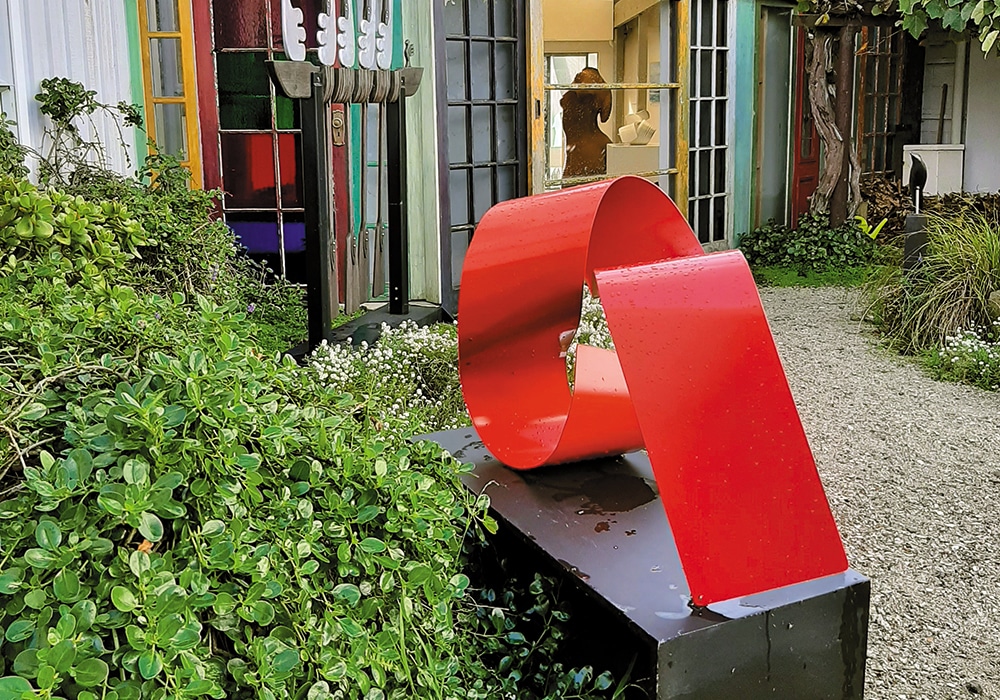
We were intrigued by the name Dead Dog Bay Wetland Garden and Sculpture, so headed along for a look. What a find. We spent ages wandering the extensive gardens, admiring sculptures big and small. Nearby we happened upon Rangihoua Estate – not a winery but an olive oil producer. We had a tasting here, and left with a jar of herb spread.

Luckily we were on Waiheke on a Saturday, so were able to visit the Ostend Market. This was jam-packed with stalls selling everything from books to baskets. There were food stalls, local produce and all manner of goods, old and new.
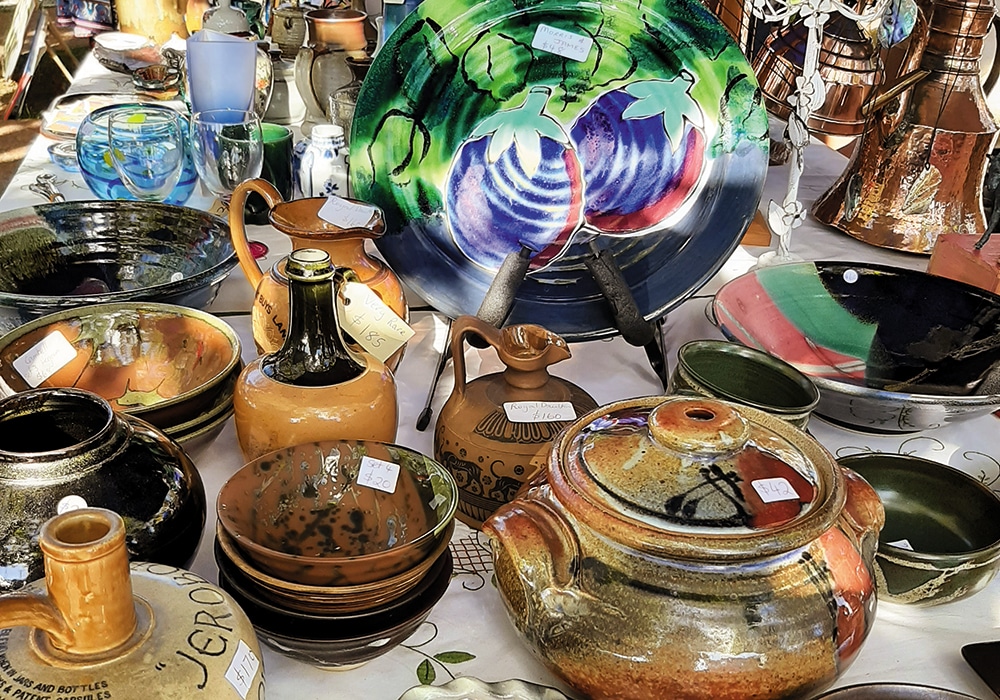
There’s so much to see and do on Waiheke Island, we feel as though we’ve only scratched the surface. We’ll have to return.